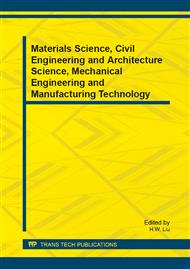p.1087
p.1091
p.1096
p.1100
p.1104
p.1108
p.1112
p.1117
p.1121
The Design of Emergency Rescue Equipment for Agricultural Motor-Pumped Wells
Abstract:
A wide variety of motor-pumped wells were used in agricultural in our daily life. Considering the service situation, the motor-pumped well was exposed to the air usually. With the condition, the falling accidents of underage children are reported frequently. It is extremely complicated to rescue the children trapped in the narrow and small space. The emergency rescue equipment based on optimization design method and dynamics analysis is introduced in the paper. This Motor-pumped well Rescue Equipment with the carrying platform can be controlled by the flexible rope to adapt to different rescue site. With the protection of umbrella support structure, the equipment completes combined action by dragging the manipulator; the equipment has been set up scalable obstacle negotiation mechanism so that it can adapt to the Motor-pumped well larger than 350 mm in diameter. In the research, the virtual prototype technology was used to simulate the kinematics and dynamics characteristics of the mechanical system. The feasibility of the design scheme of mechanical system was proved with the simulation analysis results. The equipment has advantages of the structure is compact, safe and reliable, easy to use. The research of the emergency rescue equipment for agricultural motor-pumped wells can be regarded as the reference of the related research.
Info:
Periodical:
Pages:
1104-1107
Citation:
Online since:
January 2014
Authors:
Price:
Сopyright:
© 2014 Trans Tech Publications Ltd. All Rights Reserved
Share:
Citation:


